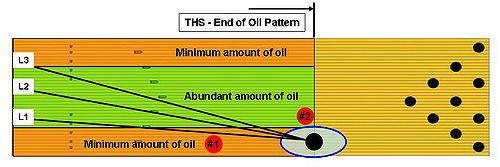Lane Play Strategy for the Typical House Shot
Lane Play Strategy for the Typical House
House shots fall under the category of recreation. Lack of an understanding of the advantages limits the masses from enjoying the THS. I personally view this as a crime and a major deterrent in the growth of our sport.
Axiom#1
The dominant characteristic of ball motion is when and where the ball loses ball speed during it’s path down the lane…….Mo Pinel
Axiom#2
Successful lane play is a result of maximizing your margin of error.
Axiom#3
Ball needs to transition through the three phases of ball motion. Skid – Hook - Roll
Known factors about house shots:
There is an abundant amount of oil in the center of the lane. A minimum of 3 units required on the outside portion of the lane near the end of the pattern.
Abundant amount of oil in the center of the lane equals skid
Three units of oil on the outside portion of the lane equals a lot of free friction
Tip of the day – the free friction outside is you real friend, not the abundant amount of oil in the center.
Lane Play Chart Definition
Minimum amount of oil on the outside portion – Orange section
Abundant amount of oil in the center of the lane – Green section
Lane Play Keys
1) Near the end of the pattern get your ball in the outside portion of the lane. This can be in the 6 – 9 board area of the lane, dependent on many variables. Key is that it must be outside the heavy portion of lane oil in the middle down lane. The free friction right
down lane is key for Axioms#1 - #3.
2) Select a ball that is controllable off the breakpoint; and as ballspinner has stated only use as much power as you can control. There is plenty of information on this forum about THS layouts.
3) Once you get your ball in THS sweetspot (6-9 board) down lane; adjust your feet left or right to control the pocket. Always moving the feet in the direction of your miss on a house shot.
4) As the front part of the lane transitions it is key that you Do Not move your breakpoint in towards the center of the lane as you adjust your feet.
5) If your ball gets to the friction early (Red ball #1) you will see early ball reaction. Also ball speed on the monitor will be lower (more friction –ball slows down sooner). If it never gets to the free friction (Red Ball#2) on the outside portion of the lane - ball speed on the monitor will be higher (less friction). You may still hit the pocket from Red Ball #2 but your carry will suffer.
6) Ideally the ball needs to be in the blue elipse area near the end of the pattern. I drew an elipse because it is not an exact distance down the lane. Too many variables; therefore it is an area. Area is a good thing! Axiom#2!
7) The initial laydown points L1, L2 & L3 are dependent upon bowler style. But they all have one thing in common – the breakpoint area down lane.
